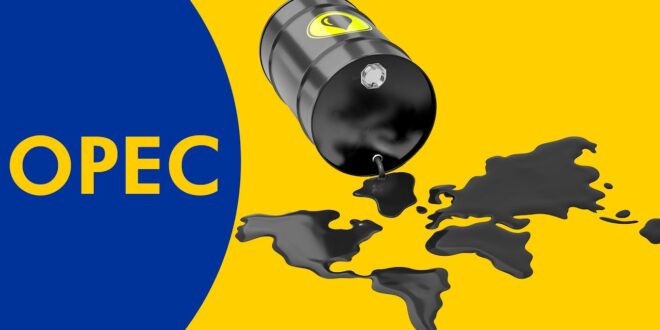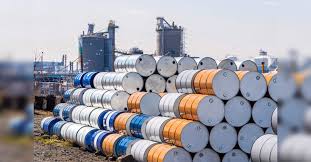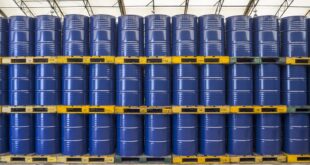Happily for Saudi Arabia, it does not take a genius to work out that persuading its OPEC+ brothers to cut their oil production to ramp up prices and then quietly selling additional oil over and above its official quota is a major money spinner. “Saudi Arabia has a long history of doing this, so it’s no surprise that it’s looking to increase its oil sales through extra production from the PNZ [Partitioned Neutral Zone shared with Kuwait], particularly as the area’s so off the radar, and Russia has been doing the same with its oil for months,” a senior source in the European Union (E.U.) energy security complex exclusively told OilPrice.com last week. According to the source, although the joint statement by Saudi Arabia and Kuwait on 9 July said that accelerated efforts to complete joint oil projects in the PNZ are to meet local energy demands, in reality they are to provide Saudi Arabia with off-the-radar – ‘dark inventory’ – oil that it can sell through various backdoor methods at currently inflated prices, without being seen to break its official OPEC+ quota. “[Oil] industry data shows that no production cuts of any kind – including those mandated by OPEC+ on Saudi Arabia or Kuwait – have been made from fields in the PNZ so far this year,” he added.
The PNZ covers a 2,230 square mile area where Saudi Arabia’s northeastern border meets the southeastern border of Kuwait. It is thought to contain reserves of around 30 billion barrels of oil and 60 trillion cubic feet of gas and is home to the onshore fields of Wafra, Fuwaris, and Humma, and the offshore fields of Khafji, and Hout, among others. The offshore Khajfi field is operated by Saudi Arabia’s Aramco Gulf Operations Co. and Kuwait Gulf Oil Co. (KGOC), a unit of Kuwait Petroleum Corp., while the onshore Wafra site is operated by KGOC and Saudi Arabian Chevron (SAC). Oil production over the past year or so has hovered around 175,000 barrels per day (level), but according to the senior E.U. energy source, this could relatively easily be increased to 300,000 bpd and, with a little more difficulty to 500,000 bpd. The basic agreement between Saudi Arabia and Kuwait is that the proceeds from the PNZ’s oil and gas are split equally between the two countries.
One major complication in assessing the true oil and gas potential of the PNZ and of extracting that on a sustained basis was that Saudi Arabia shutdown production from the area in a decision made in 2014 after Kuwait accused it of renewing Chevron’s Wafra oil field concession licence without consultation. The official Saudi explanation for the closure was that the Khafji field was that it was not compliant with new environmental air emission standards issued by Saudi Arabia’s ‘Presidency of Meteorology and Environment Authority’. Supposedly, the field had sprung a gas leak in one of its 15 platforms, which apparently necessitated the entire PNZ being shut down for five years. The unofficial version, related to OilPrice.com at the time by senior energy sources in the U.S.’s and the E.U.’s energy security departments, was that shutting the field down was Saudi Arabia’s way of keeping Kuwait in line. Specifically in this context, Kuwait had increased its competition to Saudi Arabia in the key Asian export markets to the point that it was selling oil to buyers there at the widest discount to the comparable Saudi grade for 10 years. Additionally, Kuwait had also been placing obstacles to the Kingdom’s own operations in the Wafra region of the PNZ by increasing the difficulty for Saudi Arabian Chevron to obtain work permits to operate in the Zone. This was also seen as a threat to SAC’s ability to move ahead with its full-field steam injection project in Wafra that was intended to boost output of heavy oil there by more than 80,000 bpd.
A second major complication over the PNZ has taken on greater geopolitical significance since March’s resumption of relationship deal between Saudi Arabia and Iran – brokered by China, as analysed in depth in my new book on the new global oil market order – while Kuwait still retains better relations with the U.S. and its allies. The issue is which country, or pairing of countries, has the rights to the huge ‘Dorra’ gas field, as it is known by Saudi Arabia and Kuwait, or ‘Arash’ as Iran calls it. Estimates as to how much gas this field contains vary wildly from around 10 trillion cubic feet of reserves in place to about 60 trillion cubic feet, as do estimates of production it might reach. These run from around 800 million cubic feet per day to just over 1 billion cubic feet per day. A median average estimate of the amount of oil in place is around the 300 million barrels mark, with the daily production median average estimate being around 84,000 bpd. The field is located in shallow waters in the northern Arabian Gulf, to the northeast of Saudi Arabia, the east of Kuwait, and the west of Iran. In gas and oil field terms, the field lies to the east of Kuwait’s huge onshore Burgan oilfield, and east of its Wafra oilfield – part of the PNZ.
Given China’s involvement now in the affairs of both Saudi Arabia and Iran, it seems unlikely that any resolution on the ‘Dorra/Arash’ issue will benefit Kuwait. China’s support for Saudi Arabia in broad terms will provide further backing for any further plans it might have in taking as much of the oil and gas from the shared resources of the PNZ and selling them off quietly, regardless of its OPEC+ production cut quota. As highlighted by the E.U, source, this is nothing new for Saudi Arabia, as also analysed in depth in my new book on the new global oil market order. Even at the end of 2016 when the Oil Price War started in 2014 by Saudi Arabia had crippled the finances of its fellow OPEC members and a new production cut deal was needed to bring oil prices back up, the de facto leader of OPEC, utilised its own strategic oil stockpile to sell up to 350,000 bpd via several investment banks into the spot market in a rolling dark inventory sales plan, according to several sources exclusively spoken to by OilPrice.com at the time. OPEC member Venezuela then followed suit, with a deal struck with China to safeguard its own interests. It was precisely because of these cheats on the OPEC production cut deal just after the end of the 2014-2016 Oil Price War that led to its failure to lift oil prices effectively. This, in turn, led to the understanding by OPEC members that a new member with credibility in the oil market be admitted to all future OPEC deals, with that new member being Russia.
It might seem odd to those unfamiliar with the oil market – or to those in it who simply believe what they are told by its key players without any further questions being asked – that Saudi Arabia needs the oil from the PNZ to boost its finances. Over and above the fact that its finances are still in a highly precarious state, Saudi Arabia still does not have anywhere near the oil reserves or production capabilities that it has long said it has. As analysed in forensic detail in my new book on the new global oil market order, the crude oil production figures that Saudi Arabia has long bandied around as being fact are no such thing. Far from being able to produce 10, 11 or 12 or more million barrels per day (bpd), Saudi Arabia has struggled to produce anything over 9 million bpd. To be accurate: from 1 January 1973 to Monday 31 July 2023 Saudi Arabia’s average crude oil production is 8.257 million bpd. This means that its equally much-vaunted spare capacity of around 2 million bpd is also not true, founded as it is on a false baseline crude oil production capability. Consequently, being able to sell much of the PNZ’s oil (and gas) production quietly at currently inflated prices – over and above its official OPEC+ quota – would have considerable appeal to Saudi Arabia. And it is something it has done many times before.

 Iran Energy News Oil, Gas, Petrochemical and Energy Field Specialized Channel
Iran Energy News Oil, Gas, Petrochemical and Energy Field Specialized Channel



